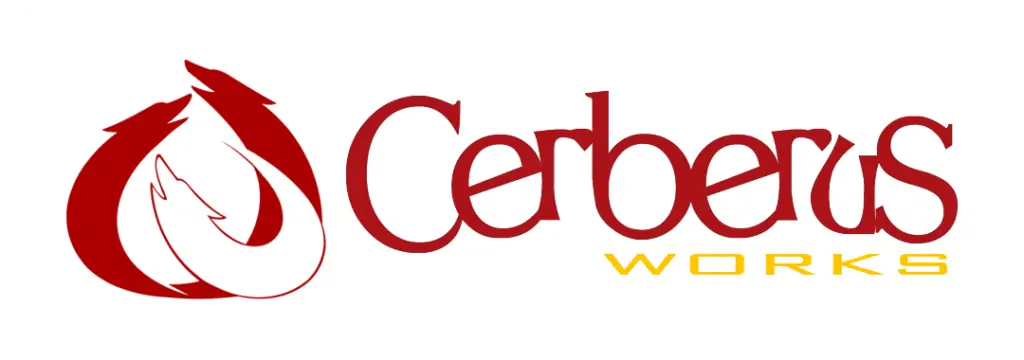URL slug is more than just a web address; it’s a critical component of SEO and user experience. Crafting the perfect URL slug involves a balance between being search engine friendly and readable for users. This article delves into the nuances of creating URL slugs that not only resonate with algorithms but also with human visitors, ensuring your content stands out in the crowded online landscape.
Daftar Isi
BeralihHal-hal Penting yang Dapat Dipetik
- Incorporate relevant keywords in your URL slug for SEO benefits, but prioritize clarity and brevity to enhance user experience.
- Aim for a maximum of five words in your slug, ensuring it is concise and meaningful, to improve rankings and click-through rates.
- Manually edit auto-generated slugs to remove unnecessary words and stop words, as reliance on SEO plugins for this task may not yield the best results.
- Maintain a well-structured website architecture with short, descriptive paths, as complex or random URLs can negatively impact both SEO and usability.
URL Slug Sculpting for the Spotlight

URL Slug Keywords: Balancing SEO and Sensibility
In the grand theater of the web, your URL slug is the marquee that entices the audience. It’s the delicate dance of incorporating kata kunci that search engines adore, without stepping on the toes of readability. Kata kuncinya adalah secret sauce, but slather on too much, and you risk overwhelming the palate of your potential visitors.
- Use keywords that are relevant and descriptive of the content.
- Avoid isian kata kunci, which can lead to penalties from search engines.
- Remember that a URL should be easy to read and remember for humans.
Crafting a URL slug isn’t just about pleasing the algorithmic gods. It’s about striking a chord with both robots and humans alike.
While SEO tools can guide you to the spotlight, never forget that your content’s readability is the star of the show. After all, what good is a standing ovation from search engines if human audiences exit stage left?
Short and Sweet: The Five-Word URL Slug Mantra
In the world of URLs, brevity is the soul of wit. Keep your slugs to a maximum of five words to ensure they’re not just SEO-friendly, but also memorable and manageable. This isn’t just a random rule; it’s a tried-and-true guideline that balances descriptiveness with conciseness.
Crafting the perfect slug is an art form akin to writing a haiku; every word must earn its place.
Here’s a quick checklist to ensure your slugs hit the sweet spot:
- Gunakan descriptive words that reflect your content
- Exclude unnecessary ‘stop words’
- Make it readable and easy to type
- Be consistent across your website
- Aim for a slug that’s easy to share
Remember, while SEO plugins might offer to trim the fat for you, there’s no substitute for the human touch. Manual editing allows you to choose the most relevant words and maintain the essence of your content.
Auto-Generated URL Slugs Need a Human Touch
While the convenience of auto-generated slugs from titles seems like a time-saver, it often misses the mark on creating SEO-friendly and readable URLs. Auto-generated slugs can be bloated with unnecessary words, failing to consider the nuances of language and the importance of brevity. For instance, WordPress might suggest a slug that mirrors your title, but it’s up to you to sculpt it to perfection.
Crafting a slug requires a human touch to ensure it’s not only SEO-ready but also crisp and clear to your audience.
Here are a few reasons why manual intervention is crucial:
- Auto-generated slugs may include ‘stop words’ that add no value.
- They can lack the context and intent that a human editor can provide.
- Manual editing allows for the inclusion of relevant keywords without overstuffing.
Remember, a slug is not just a part of your URL; it’s a reflection of your content’s core message. By manually editing, you can ensure that your slug is a concise and accurate ambassador for your page.
Technical Tweaks for Top-Notch URL Slugs

Trimming the Fat from Your URL Slugs
In the world of URL optimization, less is often more. Stop words—those little gremlins like ‘and’, ‘or’, ‘but’, and ‘the’—can bloat your slugs and dilute their punch. By trimming these unnecessary fillers, you create cleaner, more search-friendly URLs. Remember, your slug is not a sentence; it’s a signpost guiding mesin pencari and users alike.
Keep your slugs short and simple. Aim for a maximum of five words to maintain clarity and relevance.
Here’s a quick checklist to help you declutter your slugs:
- Bypass common stop words to keep URLs concise.
- Maintain lowercase uniformity across your slugs.
- Edit auto-generated slugs to remove redundancies.
- Manually weed out non-essential words for a meaningful slug.
While SEO plugins offer a convenient way to remove stop words, relying solely on automation can be a misstep. Manual intervention ensures that your URL remains not just SEO-friendly, but also meaningful and user-friendly.
Architecting a URL Blueprint: Structuring for Success
When it comes to URL design, think of yourself as an architect drafting the blueprint for a digital edifice. Your URLs are the hallways guiding visitors and search engines alike through the rooms of your website. Structure is paramount, and a well-planned URL can be the difference between a visitor navigating with ease or getting lost in a maze of meaningless characters.
- Start with a solid foundation: your domain name should be memorable and brand-centric.
- Erect your pillars: use logical category and subcategory names that reflect your content.
- Cap it off with a descriptive page name: this is where your kata kunci shine, but don’t let them blind you to readability.
Remember, a URL slug should be a beacon of clarity in the murky waters of the web. Keep it short, keep it sweet, and always keep it relevant. As the snippets suggest, “short, descriptive, and relevant” are the cornerstones of a SEO-friendly URL. Avoid the siren call of isian kata kunci and instead opt for a URL that’s easily digestible for both humans and search engines.
XML Sitemap: Necessary or Not?
The XML sitemap debate is akin to a gardener debating the necessity of a blueprint for a wildflower meadow; it’s helpful, but not the be-all and end-all. An XML sitemap can be useful, but let’s not overstate its role in the grand scheme of SEO. It’s a blueprint of your website, guiding search engines through your digital domain, but it doesn’t boost your rankings directly.
While it’s true that sitemaps make it easier for search engines to crawl and index content, they are not a silver bullet for SEO success. Even without a sitemap, adept search engines like Google can still find their way around.
However, for large websites or those with a labyrinth of pages, an XML sitemap can be the thread of Ariadne, leading search engines out of the maze. It’s particularly handy when dealing with new or heavily updated content. And if you’re using WordPress, rejoice! Since version 5.5, sitemaps are automatically generated, so you can cross ‘create a sitemap’ off your to-do list.
Here’s a quick checklist for your sitemap considerations:
- Is your website large with many pages?
- Do you frequently update content?
- Are you using a platform that doesn’t auto-generate sitemaps?
If you answered ‘yes’ to any of these, then a sitemap might just be your SEO sidekick.
The Keyword Performance: Optimizing for Both Robots and Humans

Keywords in the Spotlight: Integrating Without Overwhelming
In the grand theater of SEO, your URL slug plays a starring role. It’s the marquee that entices the audience—both human and robotic—to your content’s show. Integrating keywords into your slug is akin to casting the right lead actor: it must be done with finesse. Here’s how to ensure your keywords shine without stealing the entire spotlight:
- Start with your primary keyword: Place it near the beginning of your slug to catch the eye of search engines and users alike.
- Add a dash of relevance: Incorporate secondary keywords or related terms to enrich context and appeal.
- Avoid the perils of overacting: Isian kata kunci is a surefire way to earn penalties from Google’s vigilant algorithm.
Remember, the goal is to craft a slug that resonates with the search query and maintains the elegance of simplicity.
Finally, while auto-generated slugs may offer a quick solution, they often lack the nuance of a human-crafted narrative. Manual intervention allows you to weave in keywords thoughtfully, ensuring they align with user search queries and SEO best practices. It’s not just about being found; it’s about being remembered.
The Understudy: When Keywords Take a Back Seat in URLs
In the grand theater of SEO, not every character can play the lead. Sometimes, kata kunci must graciously step aside, allowing clarity and user experience to take center stage. Boldly defying the conventional wisdom, the understudy—our URL slug—performs without the star keyword, yet still captures the audience’s attention.
Consider the sage advice from Google’s John Muu, who asserts that keywords in URLs are somewhat ‘overrated.’ Instead, focus on crafting URLs that resonate with users, as mobile browsing often obscures the URL from view. This user-centric approach aligns with the broader SEO narrative that prioritizes user experience.
Remember, a URL slug’s performance isn’t solely measured by keyword density. Its true merit lies in its ability to guide and inform.
Here’s a quick checklist to ensure your URL slugs remain clear and functional, even without the primary keyword:
- Reflect the essence of the content
- Keep it short and memorable
- Avoid jargon and complex terms
- Ensure easy readability and pronunciation
By adhering to these principles, your URL slugs can still play a pivotal role in the SEO ensemble, even when they’re not in the limelight.
Using Keywords to Enhance PPC Search Campaigns
When we view your PPC campaign, the spotlight shines brightest on your chosen keywords. Crafting a keyword strategy that resonates with both search engines and human audiences is akin to a standing ovation in the digital marketing theater. Here’s how to ensure your keywords get the applause they deserve:
- Create keyword groups to target audiences searching for similar products or services, enhancing efficiency and relevance.
- Incorporate your kata kunci target in both ad copy and landing pages to establish a strong connection with your campaign’s theme.
- Use tools like Ahrefs or Semrush to discover new keywords, their search volume, and variations of search queries.
Remember, while the right keywords can be your opening act, monitoring and adapting your strategy based on PPC results is crucial for the grand finale.
Lastly, don’t shy away from high-CPC keywords in your SEO efforts. They might cost more, but they can attract valuable traffic in a cost-effective manner over time. After all, in the grand scheme of PPC, it’s not just about the immediate click, but the ongoing engagement and conversion that follows.
Polishing Your URL Slug for the Standing Ovation

Avoiding the Gobbledygook: The Case for Meaningful URLs
In the realm of URL creation, there’s a fine line between a string of gibberish and a path paved with purpose. Avoiding the gobbledygook means crafting URLs that are not only SEO-friendly but also clear and concise to your human audience. Remember, a URL should be a signpost, not a puzzle. Here’s a quick checklist to ensure your URLs are up to snuff:
- Simpan saja. short and simple
- Use keywords effectively
- Avoid using stop words
- Gunakan tanda hubung untuk memisahkan kata
Crafting a URL is like writing a haiku; every character counts, and clarity is king.
By adhering to these principles, you’ll be well on your way to creating URLs that resonate with both search engines and site visitors. It’s about striking a balance—using enough keywords to be found, but not so many that your URL reads like a desperate plea for attention.
Edit Your URL Slug for Maximum Impact
The final act of your URL slug’s performance is crucial. It’s the moment when you ensure that every character plays its part to perfection. Editing your slug may seem like a minor tweak, but it can have a major impact on both SEO and user experience. Here’s when to take a bow and make those edits:
- After crafting your headline: Compare the slug to your headline. Does it reflect the essence without the fluff? If not, it’s time for a rewrite.
- Post-publishing: If you notice a dip in traffic or a change in content focus, don’t hesitate to update the slug. It’s never too late for a better fit.
- Before a redesign: A site overhaul is the perfect opportunity to ensure your URLs are as streamlined as your new layout.
Remember, a well-crafted slug is like a handshake with your audience—it’s the first impression that invites them in. So, make it count!
SEO Plugins: Helpful Assistants or Unnecessary Crutches?
In the grand theater of SEO, plugins like Yoast SEO and Semrush have taken center stage, promising to simplify the complex world of search engine optimization. But are they the lead actors in our success stories, or just overzealous understudies? The truth is, their roles have evolved.
Once upon a time, SEO plugins were the knights in shining armor for WordPress sites battling SEO woes. Now, the landscape has changed, and these plugins come packed with features that might be more about glitz than necessity. For instance, Yoast SEO Premium offers extra crawl optimization options and integrates with tools like Semrush, but one must ponder if these are essential.
The question isn’t just about whether SEO plugins are useful, but whether they are indispensable to your site’s performance.
Here’s a quick rundown of what a modern SEO plugin does for your blog:
- Adds custom title tags and meta descriptions
- Implements NoIndex on low-value pages
- Manages Next and Prev meta tags for paginated content
- Integrates social media tags such as OG
While these features can be manually added, a plugin can save time and hassle. Yet, it’s worth considering if the convenience outweighs the potential bloat and slowdown of your site. After all, there are standalone plugins that might serve your needs better without the extra fluff.
As you approach the grand finale of your website’s performance, ensure your URL slug is as polished as the rest of your content. Don’t let the curtain fall on your digital presence without that final touch of perfection. Hubungi kami sekarang for expert advice and services that will help you fine-tune your URL to resonate with your audience. Let’s collaborate to make your website’s final act a standing ovation-worthy masterpiece!
Kesimpulan
In SEO, the humble URL slug might seem like a tiny stitch, but oh, what a pivotal role it plays! We’ve danced through the dos and don’ts, waltzed around the whys, and even tangoed with the technicalities. Remember, a slug is not just a squishy garden dweller—it’s your first handshake with Google and your audience. Keep it short, snappy, and stuffed with meaning, like a secret code that unlocks the treasure trove of your content. So, go forth and craft those slugs with the finesse of a wordsmith and the precision of an SEO ninja. May your click-through rates soar and your rankings climb ever higher!
Pertanyaan Umum
What is a URL slug and why is it important for SEO?
A URL slug is the part of the URL that identifies a particular page on a website in a readable form. It is crucial for SEO as it helps search engines understand the content of the page, and a well-crafted slug can improve click-through rates by making the URL more appealing to users.
How can I create a SEO-friendly URL slug?
To create an SEO-friendly URL slug, include relevant keywords, keep it short and descriptive, and aim for a maximum of five words. Avoid using stop words and ensure the slug reflects the content of the page.
Should I use stop words in my URL slugs?
It’s generally best to remove stop words (like ‘on’, ‘is’, ‘at’) from URL slugs to keep them concise and focused on the main keywords, as stop words do not add significant SEO value.
Is an XML sitemap necessary for SEO?
An XML sitemap can be useful for helping search engines crawl and index your site, but it is not a strict requirement for SEO. A well-structured website and clear URL slugs can often suffice.
How do title tags and meta descriptions affect my website’s SEO?
Title tags and meta descriptions play a significant role in SEO as they are often used by search engines to generate the snippets shown in search results. Compelling, keyword-rich title tags and meta descriptions can increase click-through rates.
Can SEO plugins automatically optimize my URL slugs?
Some SEO plugins offer features to optimize URL slugs, such as removing stop words. However, relying solely on a plugin may not yield the best results. Manually reviewing and editing slugs to ensure they are meaningful and concise is recommended.








































































































